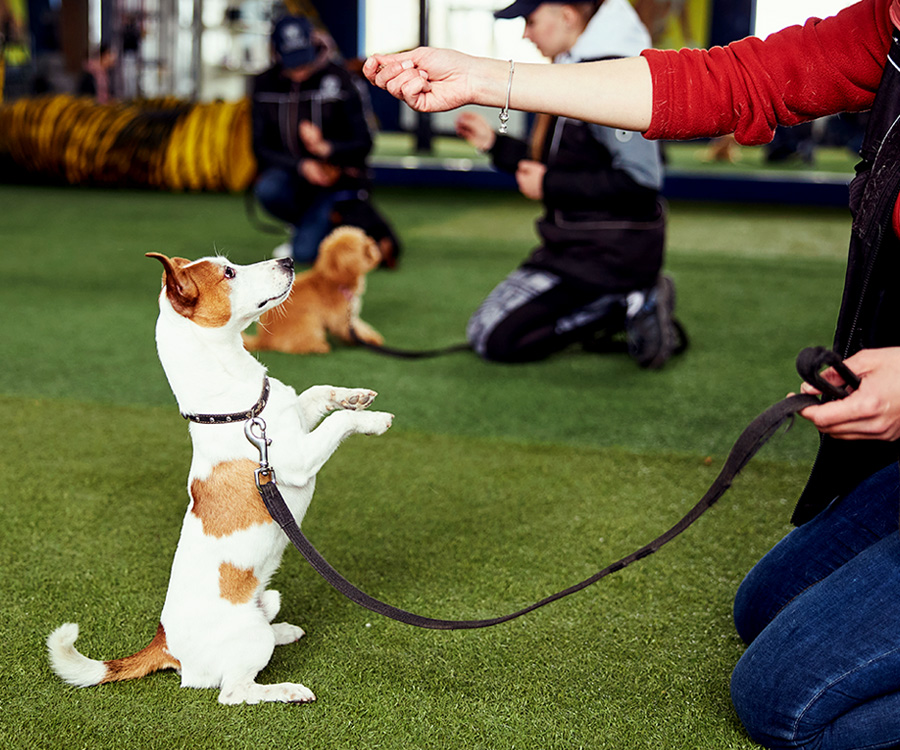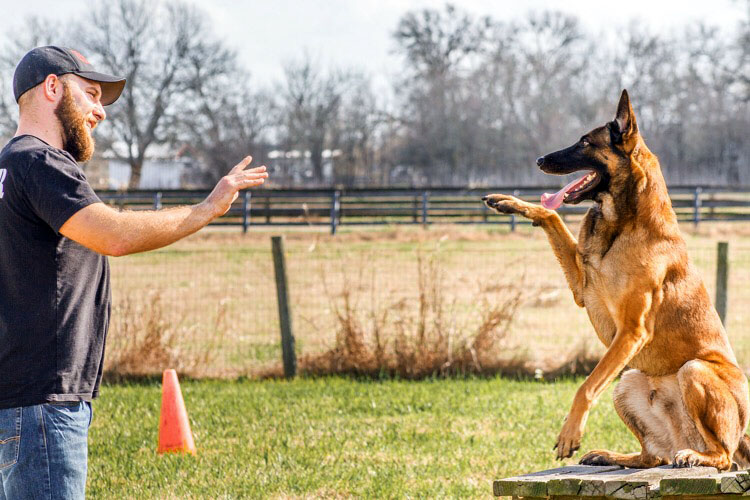Essential Tips for Successful Dog Training: An Overview for Pet Owners
Efficient pet training is a diverse procedure that calls for a critical approach customized to both the animal's character and the proprietor's purposes. Trick components such as developing regular commands, using positive support, and helping with early socialization play critical duties in fostering a well-adjusted canine friend. Nonetheless, several animal proprietors come across challenges that can impede progression, bring about disappointment and unpredictability. Comprehending how to navigate these barriers can dramatically improve the training experience, eventually transforming the partnership in between owner and dog. What are the crucial methods that can be utilized to ensure success in this undertaking?
Comprehending Canine Habits
Understanding pet dog behavior is crucial for efficient training and cultivating an unified relationship in between canines and their owners. Pets interact largely with body movement, vocalizations, and actions, making it critical for proprietors to interpret these signals precisely. Identifying a canine's pose, tail placement, and ear orientation can give insights into its mood. A wagging tail does not always suggest joy; it can also indicate enjoyment or anxiousness.

Socialization plays a considerable role in dog behavior; direct exposure to numerous atmospheres, individuals, and other animals can considerably impact a dog's personality. Furthermore, factors such as type features and private character need to guide training techniques, as some types might have certain behavioral traits that demand customized methods. By recognizing these elements, proprietors can produce an encouraging atmosphere that encourages positive behavior, causing successful training results and a deeper bond with their family pets.
Establishing Constant Commands
Effective interaction with your dog begins with establishing constant commands. This fundamental aspect of training is vital for fostering understanding in between you and your pet. Consistency in the commands you make use of guarantees that your pet can reliably connect details words or phrases with the preferred actions.
When choosing commands, pick clear, distinct words that are simple to separate and say from each other. Prevent making use of similar-sounding commands that may puzzle your pet dog. Utilizing "rest" and "remain" is ideal, but "sit" and "hit" might lead to misconceptions.
Additionally, keep the exact same tone and quantity for each command. Canines are sensitive to vocal hints, so differing your tone can create confusion.
It is similarly crucial to guarantee that all relative get on the exact same page regarding the commands made use of. A united front in command use will protect against blended signals and strengthen the learning procedure.
Positive Reinforcement Strategies
The power of positive support in pet dog training hinges on its capacity to motivate desired actions with incentives and appreciation. This technique is based in the principle that actions complied with by beneficial end results are more probable to be duplicated. By incorporating favorable reinforcement right into your training regimen, you can properly shape your dog's habits in a constructive way.
To implement positive support, it's vital to identify what inspires your pet, whether it be treats, playthings, or verbal appreciation. When your dog carries out a wanted action, such as resting on command, right away reward them with a treat or affection. This organization in between the command and the positive end result strengthens their understanding.
It's critical to timing the rewards properly; delivering the reinforcement within secs of the preferred habits aids your pet make the connection (dog training). Additionally, uniformity is key-- guarantee that all relative use the exact same commands and benefit systems to stay clear of confusion

Gradually, you can lower the frequency of treats as your pet dog discovers the actions, transitioning to praise or intermittent benefits. This approach not just cultivates a strong bond between you and your canine however additionally advertises a favorable learning environment, making training a delightful experience for both.
Socialization and Interaction
Regularly subjecting your pet dog to a selection of settings, people, and various other pets is crucial for their social development. Socialization ought to begin early, ideally during the crucial window of 3 to 14 weeks, when puppies are most receptive to new experiences. Older canines can also benefit from ongoing socializing initiatives.
Introduce your canine to different setups, such as parks, pet-friendly shops, and metropolitan areas. This exposure aids them adjust to numerous stimuli, minimizing stress and anxiety and worry reactions. Encourage favorable communications with various other canines and people, making sure that these encounters are secure and controlled to foster self-confidence.
Use structured playdates with genteel canines, as this can boost your pet dog's social skills and show them suitable actions. Obedience classes and training sessions additionally offer superb possibilities for socialization, permitting your canine to connect with others in a supervised setting.
Monitor your pet dog's body movement during communications, as this will assist you gauge their comfort degree. Gradually boost direct exposure to more difficult scenarios while guaranteeing that each experience is favorable. A well-socialized dog is a lot more most likely to exhibit balanced actions, making them a joy to have in any type of setup.
Addressing Common Training Obstacles
Every canine proprietor will certainly encounter training difficulties at some time, no matter their canine's age or socialization degree. Recognizing common issues such as stubbornness, diversions, and terror can aid in developing effective methods for renovation.

Distractions during training sessions can derail emphasis. To battle this, begin training in a quiet setting with marginal stimuli. Progressively present disturbances as the click over here pet comes to be extra proficient in commands. Short, frequent training sessions are also reliable in keeping focus.
Terror can impede a pet dog's knowing process. Steady desensitization to the resource of worry, paired with positive support, can assist reduce anxiety. Perseverance is vital; never force a pet into a situation that creates distress, as this might intensify the issue.
Inevitably, understanding and attending to these common challenges with an organized method will certainly foster an extra efficient training experience, strengthening the bond in between dog and proprietor while promoting efficient learning.
Verdict
In summary, successful pet dog training depends on an extensive understanding of canine behavior, the establishment of constant commands, and the application of positive reinforcement techniques. Socializing plays an essential duty in creating well-adjusted animals, while attending to common training difficulties requires patience and adaptability. By implementing these necessary techniques, pet dog owners can foster a strong bond with their dogs and advertise desirable habits, Get More Info inevitably bring about a harmonious connection in between humans and their canine buddies.
Recognizing canine habits is essential for effective training and promoting an unified relationship in between pooches and their proprietors.Socializing plays a considerable duty in canine habits; direct exposure to various environments, people, and various other pets can substantially impact a canine's personality.The power of favorable support in canine training exists in its capability to urge preferred habits through benefits and appreciation. By including positive support right into your training routine, you can properly shape your pet dog's behavior in a useful manner.
In summary, you could try these out successful pet training counts on a thorough understanding of canine behavior, the facility of consistent commands, and the application of positive reinforcement techniques.
Comments on “How to Choose the Right Method for Successful Dog Training”